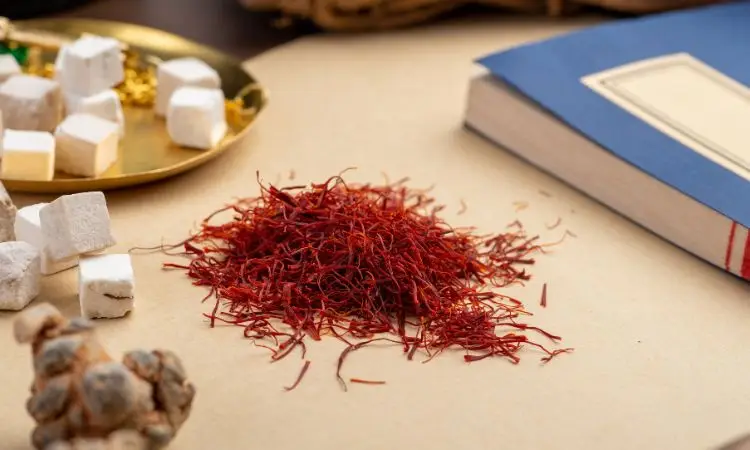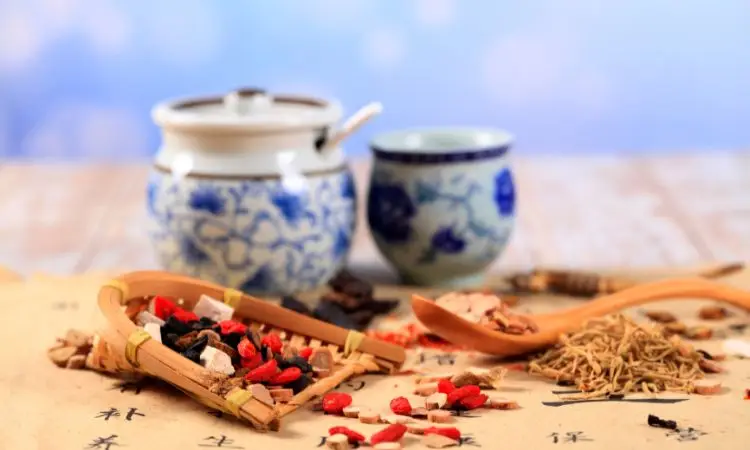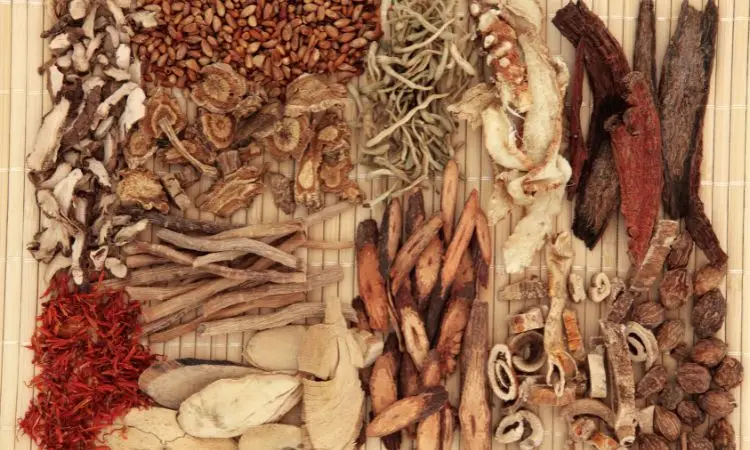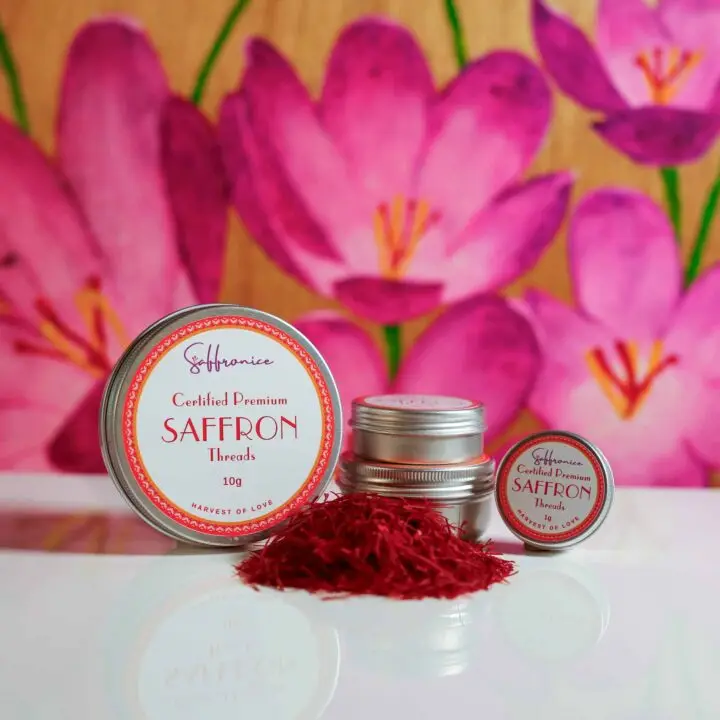📌 Quick Answer: Saffron has been used in traditional medicine for over 4,000 years across ancient civilizations, including Persia, China, Egypt, Greece, and Rome. Historical texts document its use for treating depression, digestive issues, respiratory problems, and women’s health conditions. Modern research validates many traditional applications, confirming saffron’s antioxidant, anti-inflammatory, and neuroprotective properties.
⚠️ Medical Disclaimer: This article is for educational purposes only. Always consult healthcare professionals before using saffron medicinally, especially if pregnant, nursing, or taking medications. Saffron can interact with certain drugs and may cause adverse reactions in some individuals.
Historical Origins and Early Cultivation
Understanding what saffron requires exploring its remarkable journey from ancient cultivation to global medicinal recognition. The history and origins of saffron reveal a spice that has been revered for its healing properties across multiple civilizations for millennia.
Ancient Beginnings of Saffron Medicine
Archaeological evidence places saffron’s medicinal use as early as 1600-1500 BCE, with Minoan frescoes depicting saffron harvest ceremonies that likely held both religious and therapeutic significance. The ancient world’s most expensive spice commanded prices rivaling gold, partly due to its recognized medicinal value.
Early Cultivation Centers:
- Ancient Persia (Iran): Primary cultivation region with sophisticated agricultural knowledge
- Mediterranean Basin: Greek islands, particularly Crete, showing early cultivation evidence
- Kashmir Valley: High-altitude cultivation producing premium medicinal-grade saffron
- Ancient Mesopotamia: A Trade hub distributing saffron throughout the known world
First Medicinal Documentation
The earliest written records of saffron’s therapeutic applications appear in ancient Assyrian botanical texts dating to 2300 BCE, where it was prescribed for digestive ailments and respiratory conditions. These early medical applications established patterns that would persist across cultures for thousands of years.
Prehistoric to Ancient Period Applications:
- Digestive system disorders and stomach ailments
- Respiratory conditions, including cough and breathing difficulties
- Women’s health issues, including menstrual irregularities
- Mood disorders and what would now be recognized as depression
- Pain management and anti-inflammatory applications
Trade Routes and Medical Knowledge Distribution
The expansion of saffron cultivation along ancient trade routes facilitated the spread of medicinal knowledge across civilizations. Phoenician traders, Persian merchants, and later Islamic scholars carried both the spice and its therapeutic applications throughout the known world.
Knowledge Transfer Mechanisms:
- Merchant trading posts serving as medical information exchanges
- Scholarly translations preserving ancient medical texts
- Court physicians sharing knowledge between royal houses
- Religious institutions maintaining medical manuscript collections
- Military campaigns introducing saffron medicine to new regions
Medical Historian’s Note: The consistency of saffron’s medicinal applications across diverse ancient cultures suggests empirical observation of genuine therapeutic effects, rather than mere superstition or cultural transmission of ineffective practices.

Botanical Properties and Active Compounds
The medicinal properties of saffron stem from its unique botanical characteristics and complex phytochemical profile. Understanding these scientific foundations helps explain why ancient physicians consistently recognized its therapeutic value across different medical traditions.
The Crocus sativus Plant
Saffron comes from the flower stigmas of Crocus sativus, an autumn-blooming perennial that requires specific environmental conditions for optimal growth. The plant’s triploid nature means it cannot reproduce naturally, requiring human intervention for propagation—a factor that likely contributed to early cultivation expertise.
Cultivation Requirements:
- Mediterranean climate with hot, dry summers and cool, wet winters
- Well-drained, alkaline soil with good organic content
- High altitude locations (optimal: 1,500-2,000 meters)
- Careful irrigation management to prevent bulb rot
- Hand-harvesting of delicate stigmas within hours of flowering
Active Phytochemical Compounds
Modern analysis has identified over 150 chemical compounds in saffron, with three primary components responsible for its medicinal properties:
Crocin (Color Compound):
- Carotenoid pigment providing golden-yellow color
- Powerful antioxidant properties protect against cellular damage
- Neuroprotective effects supporting brain health
- Anti-inflammatory activity reduces systemic inflammation
- Water-soluble nature allows easy extraction in traditional preparations
Picrocrocin (Flavor Compound):
- Glycoside responsible for saffron’s distinctive bitter taste
- Converts to safranal during the drying process
- Potential antidepressant properties through neurotransmitter modulation
- Digestive system benefits supporting gastrointestinal health
- Respiratory system applications for breathing conditions
Safranal (Aroma Compound):
- Volatile aldehyde creates saffron’s characteristic fragrance
- Central nervous system effects supporting mood regulation
- Sedative properties are useful for sleep disorders
- Anxiolytic effects reduce anxiety and stress
- Cognitive enhancement potential supporting memory function
Quality Factors Affecting Medicinal Potency
Ancient physicians understood that saffron’s therapeutic value varied significantly based on origin, harvest timing, and processing methods—knowledge that modern science has validated through chemical analysis.
Quality Determinants:
- Geographic origin: Higher altitude cultivation generally produces superior medicinal compounds
- Harvest timing: Early morning collection, preserving maximum active compound concentrations
- Processing methods: Careful drying, preserving volatile compounds while preventing degradation
- Storage conditions: Protection from light, moisture, and maintaining potency over time
- Age factors: Fresh saffron contains higher concentrations of active therapeutic compounds
| Compound | Percentage in Quality Saffron | Primary Therapeutic Effects |
|---|---|---|
| Crocin | 10-25% | Antioxidant, neuroprotective, anti-inflammatory |
| Picrocrocin | 5-15% | Antidepressant, digestive, and respiratory support |
| Safranal | 0.5-2.5% | Mood regulation, sedative, anxiolytic |
Food Scientist’s Note: The synergistic interaction between these compounds likely explains why whole saffron extract often shows superior therapeutic effects compared to isolated individual compounds in research studies.
The Golden Age of Persian Medicine
The Islamic Golden Age (8th-13th centuries) represents the pinnacle of ancient saffron medicine, with Persian physicians developing sophisticated theoretical frameworks and practical applications that influenced global medical practice for centuries.
Avicenna’s Revolutionary Contributions
Abu Ali al-Husayn ibn Sina, known in the West as Avicenna (980-1037 CE), revolutionized the understanding of saffron’s ancient medicine through systematic observation and theoretical analysis. His masterwork, “The Canon of Medicine,” devoted significant attention to saffron’s therapeutic applications.
Avicenna’s Saffron Discoveries:
- Antidepressant Properties: First systematic documentation of mood-enhancing effects
- Digestive Applications: Detailed protocols for treating gastrointestinal disorders
- Respiratory Treatments: Specific preparations for cough, asthma, and breathing difficulties
- Cardiovascular Support: Early recognition of heart health benefits
- Neurological Applications: Treatments for headaches, epilepsy, and cognitive disorders
Key Therapeutic Principles: Avicenna established four fundamental principles for saffron’s medicinal use:
- Hot and Dry Nature: Classification within humoral theory supporting warming treatments
- Heart Strengthening: Primary cardiac tonic properties supporting cardiovascular health
- Brain Clarifying: Cognitive enhancement and mental clarity promotion
- Spirit Elevating: Mood improvement and psychological well-being support
Traditional Persian Preparation Methods
Persian physicians developed sophisticated preparation techniques that maximized saffron’s therapeutic potential while ensuring safety and efficacy.
Classical Preparation Techniques:
Saffron Water (Ma’ al-Za’faran):
- Gentle infusion in warm distilled water
- Specific timing protocols for optimal compound extraction
- Standardized ratio ensures consistent therapeutic doses
- Applications for digestive and mood disorders
Saffron Oil (Duhn al-Za’faran):
- Oil extraction methods preserving volatile compounds
- Topical applications for joint pain and skin conditions
- Respiratory treatments through aromatic inhalation
- Massage preparations for circulation improvement
Saffron Pills (Habb al-Za’faran):
- Concentrated powder forms with natural binders
- Precise dosing systems for internal medicine
- Long-term storage methods maintain potency
- Combination formulas with complementary herbs
Integration with Humoral Medicine
Persian physicians integrated saffron into comprehensive humoral medical systems, understanding its effects within broader physiological frameworks that considered individual constitution, seasonal influences, and environmental factors.
Humoral Applications:
- Melancholic Temperament: Saffron’s warming nature counteracts cold, dry conditions
- Seasonal Adjustments: Higher doses during cold months, reduced amounts in summer
- Individual Constitution: Dosage modifications based on personal temperament assessment
- Age Considerations: Different preparations for children, adults, and elderly patients
Traditional Chinese Medicine Applications
Saffron’s integration into saffron Chinese medicine occurred through Silk Road trade connections, with Chinese physicians adapting Persian and Central Asian therapeutic knowledge to Traditional Chinese Medicine (TCM) theoretical frameworks.
Historical Integration into TCM
Chinese medical texts first mentioned saffron during the Tang Dynasty (618-907 CE), initially as an exotic foreign medicine with exceptional properties. The Ming Dynasty (1368-1644) saw full integration into mainstream TCM practice with standardized applications and dosing protocols.
TCM Classification of Saffron:
- Nature: Warm
- Taste: Sweet and slightly bitter
- Meridian Tropism: Heart, Liver
- Functions: Activating blood circulation, removing blood stasis
- Quality Grade: Superior herb classification (upper-grade medicine)
Traditional Chinese Therapeutic Applications
Chinese physicians developed unique applications for saffron that differed from Persian traditions while maintaining core therapeutic principles.
Primary TCM Applications:
Blood Stasis Syndrome:
- Menstrual irregularities and painful menstruation
- Postpartum blood stasis conditions
- Traumatic injury recovery
- Cardiovascular circulation disorders
- Chronic pain conditions with blood stasis patterns
Heart-Kidney Disharmony:
- Anxiety and restlessness
- Insomnia and sleep disorders
- Depression and mood imbalances
- Cognitive decline and memory problems
- Palpitations and heart rhythm irregularities
Liver Qi Stagnation:
- Emotional frustration and irritability
- Digestive disorders with emotional components
- Premenstrual syndrome symptoms
- Chronic fatigue with mood components
- Stress-related physical symptoms
Classical Chinese Formulas
TCM practitioners developed specific formulas combining saffron with complementary herbs to enhance therapeutic effects while reducing potential side effects.
Representative Formulas:
An Shen Ding Zhi Wan (Calm the Spirit Pill):
- Primary herb: Saffron (1-2 grams)
- Supporting herbs: Ginseng, Polygala, Acorus
- Applications: Anxiety, depression, cognitive disorders
- Preparation: Honey pills taken twice daily
Xue Fu Zhu Yu Tang Modified:
- Saffron addition to the classical blood-moving formula
- Enhanced effectiveness for cardiovascular conditions
- Modern adaptations for hypertension and circulation
- Clinical applications in integrative cardiology
Modern Chinese Research
Contemporary Chinese research has validated many traditional applications while discovering new therapeutic possibilities consistent with TCM theory.
Current Research Focus:
- Cardiovascular disease prevention and treatment
- Neurological disorder applications, including dementia
- Cancer adjuvant therapy supporting conventional treatment
- Depression and anxiety disorder management
- Women’s health applications for reproductive disorders
Ancient Egyptian Therapeutic Uses
Ancient Egyptian medicine demonstrated a sophisticated understanding of saffron’s therapeutic properties, integrating the spice into comprehensive medical, cosmetic, and preservation practices that influenced Mediterranean medical traditions.
Royal Medical Treatments
Egyptian medical papyri, including the Edwin Smith Papyrus (1600 BCE) and Ebers Papyrus (1550 BCE), document saffron’s use in royal medical treatments, suggesting both therapeutic efficacy and symbolic significance in elite healthcare.
Royal Applications:
- Cleopatra’s Saffron Baths: Therapeutic bathing for skin health and mood enhancement
- Pharaonic Medicine: Internal treatments for digestive and respiratory conditions
- Court Physician Preparations: Specialized formulas for royal family health maintenance
- Ceremonial Medicine: Religious healing rituals incorporating saffron’s sacred properties
Preservation and Embalming Practices
Egyptian embalmers recognized saffron’s antimicrobial and antioxidant properties, incorporating it into mummification processes that preserved remains for millennia.
Preservation Applications:
- Antimicrobial Properties: Natural preservation preventing bacterial decay
- Antioxidant Effects: Cellular protection during the mummification process
- Aromatic Qualities: Pleasant fragrance masking decay odors
- Ritual Significance: Spiritual protection during the afterlife journey
- Quality Indication: Use of expensive saffron demonstrates wealth and status
Cosmetic and Dermatological Uses
Egyptian cosmetic medicine extensively utilized saffron for skin health, developing preparations that combined therapeutic benefit with aesthetic enhancement.
Cosmetic Applications:
Skin Health Treatments:
- Anti-aging preparations utilizing antioxidant properties
- Acne and blemish treatments leveraging anti-inflammatory effects
- Skin brightening formulas create desired complexion effects
- Wound healing preparations supporting tissue repair
- Sun protection formulas providing natural photoprotection
Beauty Enhancement:
- Hair treatments for shine and strength
- Nail preparations for health and appearance
- Perfume bases utilizing saffron’s distinctive fragrance
- Makeup formulations providing natural golden coloring
- Bath preparations for overall skin conditioning
Integration with Egyptian Medical Theory
Egyptian physicians integrated saffron into comprehensive medical systems that considered physical, spiritual, and magical aspects of healing.
Theoretical Framework:
- Divine Medicine: Association with the sun god Ra through the golden color
- Balancing Properties: Restoration of bodily harmony and health
- Protective Qualities: Prevention of disease and evil influences
- Regenerative Power: Support for natural healing processes
- Longevity Enhancement: Life extension and vitality preservation
Medical Historian’s Note: Egyptian saffron applications demonstrate a sophisticated understanding of preventive medicine, combining therapeutic intervention with lifestyle enhancement in ways that prefigure modern integrative healthcare approaches.
Greek and Roman Medical Practices
Classical Mediterranean civilizations developed comprehensive saffron medical traditions that synthesized earlier Eastern knowledge with Greek rational medical theory and Roman practical healthcare administration.
Hippocratic Medicine and Saffron
Hippocrates of Kos (460-370 BCE), considered the father of Western medicine, integrated saffron into systematic medical practice based on careful observation and rational analysis rather than supernatural belief.
Hippocratic Applications:
- Respiratory Disorders: Systematic treatment protocols for cough and breathing difficulties
- Sleep Disorders: Gentle sedative applications for insomnia and anxiety
- Digestive Medicine: Stomach treatments and appetite stimulation
- Women’s Health: Menstrual regulation and childbirth support
- Pain Management: Anti-inflammatory applications for joint and muscle pain
Hippocratic Principles Applied to Saffron:
- “First, not harm”: Careful dosing prevents toxic effects
- Natural healing support: Enhancing the body’s inherent healing capacity
- Observational medicine: Systematic recording of treatment outcomes
- Holistic treatment: Considering patient constitution and environmental factors
- Preventive applications: Health maintenance rather than only disease treatment
Roman Medical Innovations
Roman physicians, particularly those serving military and urban populations, developed practical saffron applications that emphasized efficiency, standardization, and reproducible results.
Military Medicine:
- Battle wound treatment: Anti-inflammatory and antimicrobial wound care
- Soldier health maintenance: Digestive support during campaigns
- Pain management: Battlefield analgesic applications
- Mood support: Morale maintenance during difficult conditions
- Disease prevention: Prophylactic use against epidemic diseases
Civilian Healthcare:
- Public bath treatments: Therapeutic bathing in saffron-infused waters
- Urban health maintenance: Air purification in crowded cities
- Geriatric medicine: Age-related condition management
- Pediatric applications: Gentle treatments for childhood ailments
- Occupational health: Worker health support in various trades
Classical Medical Literature
Greek and Roman medical writers produced extensive documentation of saffron’s therapeutic properties that influenced European medicine for over a millennium.
Key Medical Authors:
Dioscorides (40-90 CE):
- Systematic botanical medicine documentation
- Detailed preparation instructions and dosing guidelines
- Quality assessment criteria for therapeutic saffron
- Combination therapy recommendations with other herbs
- Contraindication warnings and safety considerations
Galen (129-216 CE):
- Theoretical framework integrating saffron into humoral medicine
- Detailed physiological explanations for therapeutic mechanisms
- Individual treatment customization based on patient assessment
- Complex formulations combining multiple therapeutic agents
- Long-term treatment strategies for chronic conditions
Pliny the Elder (23-79 CE):
- Economic and practical aspects of saffron medicine
- Geographic quality variations and their therapeutic implications
- Historical documentation of successful treatments
- Cultural integration of medical and culinary applications
- Trade route influences on medical knowledge distribution

Traditional Healing Methods and Preparations
Ancient physicians across cultures developed sophisticated methods for preparing and administering saffron medicine, creating standardized protocols that ensured both safety and efficacy in therapeutic applications.
Universal Preparation Techniques
Despite cultural differences, ancient medical traditions showed remarkable consistency in basic saffron preparation methods, suggesting empirical discovery of optimal extraction and preservation techniques.
Water-Based Preparations:
Saffron Infusion (Basic Method):
- 10-15 saffron threads in 200ml warm (not boiling) water
- Steeping time: 15-20 minutes for optimal compound extraction
- Strain before consumption to remove physical threads
- Consume within 24 hours for maximum potency
- Applications: General health, digestive support, mild mood enhancement
Concentrated Saffron Water:
- Higher thread concentration (20-30 threads per 200ml)
- Extended steeping time (30-45 minutes)
- Multiple extraction cycles reusing the same threads
- Applications: Acute conditions, intensive treatment protocols
- Storage: Refrigerated for a maximum of 48 hours
Oil-Based Extractions:
Saffron Oil (Traditional Method):
- Gentle heating of saffron threads in carrier oil (olive, sesame)
- Low temperature maintenance prevents compound degradation
- Multiple-day extraction process for complete compound transfer
- Straining and storage in dark, cool conditions
- Applications: Topical treatments, massage therapy, aromatic inhalation
Dosage Guidelines from Ancient Sources
Ancient physicians developed sophisticated dosing protocols that balanced therapeutic benefit with safety considerations, understanding that saffron’s potency required careful measurement.
Traditional Dosing Wisdom:
Therapeutic Range:
- Daily maintenance: 30-50mg (approximately 15-25 threads)
- Acute treatment: 100-150mg (50-75 threads) for short periods
- Maximum safe dose: 1,500mg daily (historical upper limit)
- Toxic threshold: 5,000mg+ (recognized as dangerous by ancient physicians)
- Lethal dose: 10,000mg+ (documented in historical toxicology texts)
Understanding proper saffron dosage daily remains crucial for anyone considering therapeutic applications, as ancient dosing wisdom largely aligns with modern safety guidelines.
Age and Constitution Adjustments:
- Children: 1/4 adult dose with careful monitoring
- Elderly: 1/2 adult dose due to increased sensitivity
- Pregnant women: Avoided except under expert supervision
- Weak constitution: Gradual dose increases with careful observation
- Robust constitution: Standard doses with potential for slight increases
Combination Therapy Approaches
Ancient physicians rarely used saffron in isolation, instead developing complex formulas that enhanced therapeutic effects while minimizing potential adverse reactions.
Classical Combinations:
Digestive Formula:
- Saffron threads: Primary therapeutic agent
- Ginger: Digestive stimulation and nausea prevention
- Cardamom: Aromatic enhancement and stomach soothing
- Honey: Natural preservation and palatability improvement
- Warm water: Optimal extraction medium and delivery system
Mood Support Formula:
- Saffron: Primary antidepressant action
- Rose petals: Emotional balance and heart support
- Lemon balm: Anxiety reduction and nervous system calming
- Chamomile: Gentle sedation and stress relief
- Wine (historically): Extraction medium and mood enhancement
Respiratory Support Formula:
- Saffron: Anti-inflammatory and expectorant effects
- Thyme: Antimicrobial and bronchodilatory properties
- Licorice root: Throat soothing and anti-inflammatory effects
- Pine honey: Natural cough suppression and antimicrobial action
- Steam inhalation: Direct respiratory system delivery
Safety Considerations in Ancient Practice:
Ancient physicians recognized several important safety considerations that remain relevant today:
Contraindications:
- Pregnancy (except specific supervised applications)
- Heavy menstrual bleeding (due to blood-moving properties)
- Bipolar disorder during manic phases (potential mood elevation)
- Scheduled surgery (blood-thinning effects)
- Known allergies to the Crocus family plants
Drug Interactions:
- Blood-thinning medications (additive effects)
- Antidepressant medications (potential serotonin syndrome)
- Blood pressure medications (additive hypotensive effects)
- Sedative medications (enhanced drowsiness)
- Diabetes medications (blood sugar effects)
Modern practitioners should be aware of the side effects of saffron and always consult healthcare professionals before beginning any therapeutic saffron regimen.
Cross-Cultural Medical Applications
The widespread adoption of saffron across diverse medical traditions demonstrates its genuine therapeutic value, as different cultures independently discovered similar applications through empirical observation and clinical experience.
Ayurvedic Medicine Integration
Indian Ayurvedic medicine incorporated saffron into comprehensive health systems that considered individual constitution, seasonal influences, and holistic well-being. Understanding saffron in Ayurveda reveals sophisticated theoretical frameworks for therapeutic application.
Ayurvedic Classification:
- Rasa (Taste): Sweet, bitter, pungent
- Virya (Potency): Hot
- Vipaka (Post-digestive effect): Sweet
- Prabhava (Special effect): Heart strengthening, mind clarifying
- Dosha Effects: Balances Vata and Kapha, may increase Pitta in excess
Classical Ayurvedic Applications:
Rasayana (Rejuvenation Therapy):
- Cellular regeneration and anti-aging effects
- Immune system strengthening and disease prevention
- Cognitive enhancement and memory improvement
- Reproductive health support for both genders
- Longevity promotion and vitality enhancement
Medhya Rasayana (Brain Tonics):
- Mental clarity and cognitive function improvement
- Memory enhancement and learning capacity support
- Anxiety and depression management
- Stress resilience and emotional balance
- Spiritual development and meditation support
Hridaya (Heart Medicine):
- Cardiovascular health maintenance and disease prevention
- Emotional heart healing and relationship harmony
- Circulation improvement and blood quality enhancement
- Cardiac rhythm regulation and blood pressure support
- Joy and contentment cultivation
Islamic Medicine Synthesis
Islamic physicians synthesized Greek, Persian, Indian, and Arab medical knowledge, creating comprehensive saffron therapeutic systems that influenced European Renaissance medicine.
Islamic Medical Innovations:
Temperament-Based Medicine:
- Individual assessment determining optimal saffron applications
- Seasonal adjustments matching natural rhythms
- Age-appropriate modifications ensuring safety and efficacy
- Gender-specific applications addressing physiological differences
- Constitutional strengthening for long-term health maintenance
Advanced Pharmaceutical Techniques:
- Distillation methods extract concentrated active compounds
- Preservation techniques maintain potency during storage
- Quality control standards ensuring therapeutic effectiveness
- Standardized preparations enabling reproducible treatments
- Complex formulations combining multiple therapeutic agents
European Medieval Medicine
European monasteries preserved and developed ancient saffron knowledge, integrating it into Christian healing traditions that emphasized both physical and spiritual well-being.
Monastic Medicine Contributions:
Hildegard of Bingen (1098-1179):
- Systematic documentation of saffron’s therapeutic properties
- Integration of spiritual healing with physical medicine
- Gender-specific applications for women’s health conditions
- Detailed preparation instructions for monastic pharmacies
- Holistic treatment approaches addressing mind, body, and spirit
Monastery Garden Medicine:
- Cultivation techniques optimizing medicinal potency
- Seasonal harvesting protocols preserving active compounds
- Processing methods maintaining therapeutic effectiveness
- Storage systems ensuring long-term medicine availability
- Teaching traditions preserving medical knowledge
Renaissance Medical Innovation
Renaissance physicians combined ancient wisdom with emerging scientific methods, creating sophisticated saffron medical applications that bridged traditional knowledge with rational inquiry.
Renaissance Contributions:
- Anatomical understanding improves application targeting.
- Chemical analysis begins to explain therapeutic mechanisms
- Clinical observation documenting treatment outcomes
- Standardized preparations ensuring consistent dosing
- International knowledge exchange is accelerating medical progress
Scientific Validation of Ancient Remedies
Modern scientific research increasingly validates ancient saffron medical applications, confirming that traditional knowledge was based on genuine therapeutic effects rather than cultural superstition or placebo responses.
Contemporary Research Confirming Ancient Uses
Current scientific studies demonstrate remarkable accuracy in ancient physicians’ understanding of saffron’s therapeutic properties and appropriate clinical applications.
Depression and Mood Disorders: Modern research confirms ancient observations of saffron’s antidepressant effects. Clinical trials demonstrate efficacy comparable to conventional antidepressants for mild-to-moderate depression. Understanding saffron for depression reveals how ancient wisdom aligns with contemporary psychiatric research.
Key Research Findings:
- Multiple randomized controlled trials show significant antidepressant effects
- Dosage ranges (30mg daily) matching historical therapeutic recommendations
- Mechanism of action through serotonin, dopamine, and norepinephrine systems
- Superior safety profile compared to synthetic antidepressant medications
- Effectiveness duration aligns with traditional treatment protocols
Digestive Health Applications: Ancient physicians’ use of saffron for digestive disorders finds support in modern gastroenterology research demonstrating anti-inflammatory and gastroprotective effects.
Scientific Validation:
- Anti-inflammatory properties reduce gastrointestinal inflammation.
- Antioxidant effects protect the digestive system tissues
- Smooth muscle relaxation supporting digestive function
- Appetite stimulation matching traditional applications
- Nausea reduction confirming historical antiemetic use
Cardiovascular Health: Traditional use of saffron for heart health receives support from contemporary cardiology research showing multiple cardiovascular benefits.
Evidence Base:
- Blood pressure reduction through multiple mechanisms
- Cholesterol level improvement and lipid profile optimization
- Arterial health support and endothelial function improvement
- Heart rhythm regulation and arrhythmia prevention
- Circulation enhancement and blood flow optimization
Active Compound Research
Scientific analysis of saffron’s chemical constituents explains many traditional therapeutic applications through identified mechanisms of action.
Crocin Research:
- Powerful antioxidant activity protects against cellular damage
- Neuroprotective effects supporting brain health and cognitive function
- Anti-inflammatory properties reduce systemic inflammation
- Cardiovascular protection through multiple pathways
- Potential anticancer activities under investigation
Safranal Studies:
- Central nervous system effects explaining mood regulation properties
- Sedative properties confirming traditional sleep disorder applications
- Anxiolytic effects supporting anxiety management uses
- Cognitive enhancement potential validating memory support claims
- Respiratory system benefits explaining breathing disorder treatments
Picrocrocin Investigation:
- Digestive system benefits confirm gastrointestinal applications.
- Potential antidepressant mechanisms supporting mood disorder treatments
- Anti-inflammatory effects explaining pain management uses
- Respiratory support validating cough and breathing treatments
- Metabolic effects suggesting diabetes management potential
Modern Clinical Applications
Contemporary medicine increasingly incorporates saffron into evidence-based treatment protocols that honor ancient wisdom while meeting modern safety and efficacy standards.
Integrative Medicine Approaches:
- Combination with conventional treatments enhances overall effectiveness
- Adjuvant therapy supporting primary medical interventions
- Preventive medicine applications reducing disease risk
- Quality of life improvement in chronic condition management
- Mental health support as part of comprehensive treatment plans
Current Research Directions:
- Neurodegenerative disease applications, including Alzheimer’s and Parkinson’s
- Cancer adjuvant therapy supporting conventional cancer treatments
- Metabolic disorders, including diabetes and metabolic syndrome
- Women’s health applications for reproductive and hormonal disorders
- Pediatric applications for developmental and behavioral conditions
Understanding saffron health benefits through scientific research validates ancient medical wisdom while opening new therapeutic possibilities for modern healthcare.
Evidence-Based Dosing
Modern research confirms that ancient dosing guidelines were remarkably accurate, with contemporary therapeutic doses closely matching historical recommendations.
Research-Supported Dosages:
- Depression: 30mg daily (15mg twice daily)
- General health: 20-30mg daily
- Acute conditions: 50-100mg daily for short periods
- Maximum safe dose: 1,500mg daily (consistent with ancient warnings)
- Therapeutic window: 30-300mg daily for various conditions
Medical Scientist’s Note: The remarkable consistency between ancient dosing recommendations and modern research findings suggests that traditional physicians possessed d sophisticated understanding of therapeutic windows and safety margins that rivals contemporary pharmacological knowledge.
Modern Applications Inspired by Ancient Wisdom
Contemporary healthcare increasingly draws inspiration from ancient saffron medical traditions, developing innovative treatments that combine traditional knowledge with modern scientific understanding and delivery systems.
Pharmaceutical Development
Modern pharmaceutical research has identified several promising applications for saffron-derived compounds, leading to the development of standardized extracts and potential therapeutic agents.
Current Drug Development:
- Standardized Saffron Extracts: Consistent potency preparations for clinical use
- Isolated Active Compounds: Purified crocin, safranal, and picrocrocin preparations
- Novel Delivery Systems: Encapsulation technologies improving bioavailability
- Combination Therapies: Saffron plus conventional medications for enhanced effects
- Targeted Applications: Specific condition formulations maximizing therapeutic benefit
Clinical Trial Progress: Multiple clinical trials investigating saffron’s therapeutic potential demonstrate promising results across various medical conditions:
- Depression Studies: Phase III trials showing efficacy comparable to conventional antidepressants
- Alzheimer’s Research: Phase II studies indicate cognitive improvement potential
- Cancer Support: Adjuvant therapy trials showing quality of life improvements
- Cardiovascular Studies: Blood pressure and cholesterol management trials
- Women’s Health: PMS and menstrual disorder management research
Nutraceutical Applications
The nutraceutical industry has embraced saffron as a premium functional ingredient, developing products that make ancient therapeutic wisdom accessible to modern consumers.
Product Categories:
Standardized Saffron Supplements:
- Capsules containing measured amounts of active compounds
- Liquid extracts with standardized potency guarantees
- Powder formulations for flexible dosing options
- Combination products with complementary nutrients
- Organic and sustainably sourced premium options
Functional Food Integration:
- Saffron-enriched teas and beverages
- Therapeutic honey and syrup preparations
- Fortified foods with measured saffron content
- Traditional preparation kits for home use
- Educational materials explaining proper usage
Integrative Medicine Applications
Modern integrative medicine practitioners increasingly incorporate saffron into comprehensive treatment protocols that honor both ancient wisdom and contemporary medical standards.
Clinical Integration Approaches:
Mental Health Support: Understanding saffron mood regulation helps practitioners develop comprehensive treatment plans that combine traditional therapeutic wisdom with modern psychological support.
- Adjuvant therapy alongside conventional antidepressants
- Natural alternatives for mild depression and anxiety
- Seasonal affective disorder management protocols
- Stress reduction programs in corporate wellness settings
- Geriatric mental health support emphasizing safety
Chronic Disease Management:
- Saffron’s anti-inflammatory properties support chronic condition management
- Cardiovascular disease prevention and treatment support
- Diabetes management as part of comprehensive metabolic care
- Arthritis and joint pain management protocols
- Digestive disorder treatment integration
Women’s Health Applications:
- Premenstrual syndrome symptom management
- Menstrual irregularity treatment protocols
- Menopause support combining traditional and modern approaches
- Fertility support as part of reproductive health programs
- Postpartum depression prevention and treatment
Quality Assurance and Standardization
Modern applications require rigorous quality standards that ensure therapeutic effectiveness while maintaining safety profiles established by ancient usage patterns.
Quality Control Parameters:
- Chemical fingerprinting confirming active compound content
- Contaminant testing ensures purity and safety
- Potency standardization enabling consistent dosing
- Stability testing maintains effectiveness over time
- Source verification supporting sustainable and ethical sourcing
Regulatory Considerations:
- FDA dietary supplement regulations compliance
- European Medicines Agency traditional use guidelines
- International quality standards for medicinal herbs
- Good Manufacturing Practice requirements
- Clinical trial protocols for therapeutic claims
Future Research Directions
Contemporary research continues exploring ancient applications while investigating novel therapeutic possibilities suggested by traditional knowledge.
Emerging Research Areas:
Neurodegenerative Diseases:
- Alzheimer’s disease prevention and treatment
- Parkinson’s disease symptom management
- Multiple sclerosis inflammatory reduction
- Cognitive decline prevention in healthy aging
- Traumatic brain injury recovery support
Cancer Research:
- Chemotherapy side effect reduction
- Natural anticancer activity investigation
- Quality of life improvement during treatment
- Prevention research in high-risk populations
- Combination therapy enhancement studies
Metabolic Health:
- Diabetes prevention and management
- Metabolic syndrome treatment protocols
- Weight management support systems
- Insulin sensitivity improvement research
- Cardiovascular disease prevention programs
Understanding science-backed saffron benefits helps bridge ancient wisdom with contemporary research, creating evidence-based applications that honor traditional knowledge while meeting modern therapeutic standards.
Educational and Cultural Preservation
Modern applications include efforts to preserve and transmit traditional saffron medical knowledge while making it accessible to contemporary practitioners and patients.
Knowledge Preservation Initiatives:
- Digital archives of historical medical texts
- Traditional practitioner interview projects
- Academic courses in ethnopharmacology
- Community education programs
- International collaboration on traditional medicine research
Cultural Bridge Building:
- East-West medicine integration programs
- Traditional healer and modern physician collaboration
- Cultural competency training for healthcare providers
- Patient education materials honoring cultural contexts
- Research partnerships between traditional and modern institutions
Medical Scientist’s Note: The convergence of ancient wisdom and modern science in saffron research exemplifies how traditional knowledge can inform contemporary healthcare while maintaining rigorous standards for safety and efficacy. This integration model may serve as a template for investigating other traditional medicines.
Antioxidant Properties and Cellular Protection
Modern research has extensively validated ancient observations of saffron’s health-preserving properties through detailed analysis of its saffron antioxidants and cellular protective mechanisms.
Free Radical Scavenging Activity
Saffron’s antioxidant compounds provide cellular protection that explains many traditional therapeutic applications:
Mechanism of Action:
- Crocin neutralizes reactive oxygen species
- Safranal protects against lipid peroxidation
- Picrocrocin prevents DNA oxidative damage
- Synergistic effects enhance overall cellular protection
- Bioavailability ensures effective tissue distribution
Clinical Relevance:
- Chronic disease prevention through cellular protection
- Aging process moderation via oxidative stress reduction
- Immune system support through antioxidant activity
- Cardiovascular health maintenance via endothelial protection
- Neurological health support through brain tissue protection
Anti-Inflammatory Mechanisms
Ancient physicians recognized saffron’s ability to reduce inflammation, now understood through modern research into specific anti-inflammatory pathways.
Inflammatory Pathway Modulation:
- COX-2 enzyme inhibition reduces prostaglandin production
- NF-κB pathway suppression limits inflammatory response
- Cytokine production regulation, balancing immune function
- Histamine release moderation reduces allergic responses
- Complement system modulation supporting immune balance
Therapeutic Applications:
- Joint pain and arthritis symptom reduction
- Gastrointestinal inflammation management
- Respiratory inflammation control
- Skin inflammation and dermatitis treatment
- Cardiovascular inflammation reduction
Conclusion
The 4,000-year journey of saffron in traditional medicine reveals a remarkable story of human observation, cultural exchange, and therapeutic wisdom that continues to enrich modern healthcare. From ancient Mesopotamian texts to contemporary clinical trials, saffron’s medicinal applications demonstrate the enduring value of traditional knowledge when combined with rigorous scientific investigation.
Ancient physicians across diverse cultures independently recognized saffron’s therapeutic potential, developing sophisticated preparation methods, dosing protocols, and safety guidelines that remain relevant today. Their empirical observations of antidepressant effects, cardiovascular benefits, digestive support, and anti-inflammatory properties have found validation through modern research, confirming the accuracy of traditional medical knowledge.
The consistency of saffron’s medicinal applications across Persian, Chinese, Egyptian, Greek, and Roman medical traditions suggests genuine therapeutic value rather than cultural superstition. Modern pharmaceutical research continues to discover new applications while validating ancient uses, creating opportunities for innovative treatments that combine traditional wisdom with contemporary medical standards.
As integrative medicine grows and natural therapeutics gain acceptance, saffron’s ancient medical legacy provides a foundation for evidence-based applications that honor cultural heritage while meeting modern safety and efficacy requirements. The spice’s journey from ancient royal medicine to contemporary clinical research exemplifies how traditional knowledge can inform modern healthcare when approached with appropriate scientific rigor.
For comprehensive information about this remarkable spice and its continued therapeutic significance, explore our detailed guide on saffron to understand how ancient medical wisdom continues contributing to contemporary health and wellness.
FAQ
What were the primary medicinal uses of saffron in ancient civilizations?
Ancient civilizations used saffron primarily for treating depression and mood disorders, digestive issues, respiratory conditions, women’s health problems, and as an anti-inflammatory agent. These applications were remarkably consistent across Persian, Chinese, Egyptian, Greek, and Roman medical traditions, suggesting genuine therapeutic value.
How did ancient physicians determine safe dosages for saffron?
Ancient physicians established dosing guidelines through careful observation and clinical experience. They typically recommended 30-50mg daily for maintenance, up to 150mg for acute conditions, with a recognized upper limit of 1,500mg. These ancient dosing recommendations closely match modern therapeutic guidelines.
What scientific evidence supports ancient saffron medical uses?
Modern research validates many ancient applications through clinical trials showing antidepressant effects comparable to conventional medications, anti-inflammatory properties, cardiovascular benefits, and neuroprotective effects. The active compounds crocin, safranal, and picrocrocin explain many traditional therapeutic observations through identified mechanisms of action.
How did different cultures prepare saffron for medicinal use?
Ancient cultures developed similar preparation methods, including water infusions (steeping threads in warm water), oil extractions (heating in carrier oils), and combination formulas with complementary herbs. These methods optimized compound extraction while ensuring safety through standardized protocols.
What safety considerations did ancient physicians recognize?
Ancient physicians identified several important safety considerations, including avoiding saffron during pregnancy, recognizing potential interactions with blood-thinning substances, establishing maximum safe doses, and understanding individual sensitivity variations. These ancient safety guidelines align remarkably well with modern contraindications.
How does modern research validate ancient saffron medicine?
Contemporary clinical trials confirm ancient observations through randomized controlled studies showing significant therapeutic effects for depression, cardiovascular health, and inflammatory conditions. Chemical analysis explains traditional effects through identified active compounds, while modern dosing research confirms ancient therapeutic ranges were scientifically accurate.



